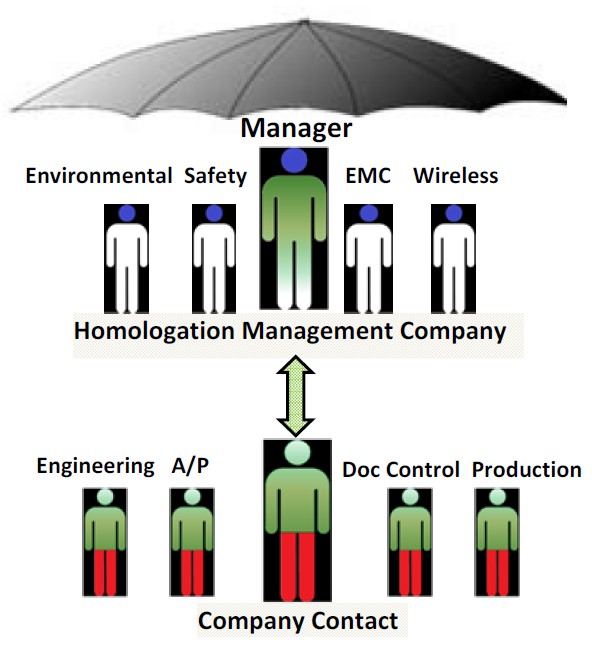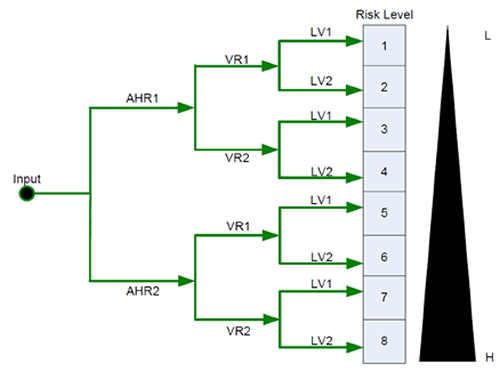Homologation Management Services (HMS)
What is Homologation?
Homologation is the process of bringing a product into compliance with, and/or certified to guidelines established by a regulating authority, generally at a national level. Homologation is typically a prerequisite to distributing or delivering products to a country or region. The term Homologation, which has been used in the automotive industry for some time, can also be applied to regulatory compliance of non-automotive products, components, and systems. We use the term because of its concise ability to describe the regulatory product certification industry.
Challenges with Global Homologation:
Manufacturers expanding into global markets, particularly developing markets, are faced with a growing number of regulatory requirements of which safety, EMC, wireless, energy, and environmental disciplines are becoming common. As a result of the increased complexity of global homologation, manufacturers can experience multiple hurdles in attaining and maintaining market access for their products, including:
- In-house staff becoming overburdened;
- Excessive certification costs;
- Poor homologation advise from outside sources;
- Unexpected expiration of certifications;
- Loss of employee with all homologation knowledge.
Navigating global certification processes with an expanding number of compliance disciplines has become a full-time job. Instead of relying on one person within the organization to muddle through this ever-changing maze of compliance, it may make sense to partner with an organization that specializes in product certification services.
Insourcing Homologation Management:
Whether you require additional support or you need someone to oversee all homologation activities, as part of our Homologation Management Service (HMS), G&M provides an industry expert to fill the necessary role. This person works as part of the team to manage and streamline internal compliance related processes. They not only rely on their own knowledge but leverage the collective expertise of the G&M team. What makes us a good fit for serving in this capacity is our technical experience and knowledge of global homologation schemes. Our experience and knowledge, coupled with our autonomy from certification bodies, makes us an ideal homologation management partner. This service is similar to certification consulting but designed to be integrated within a company’s infrastructure for more seamless results. The following are examples of how an experienced homologation team working as your in-house partner can provide value:
- Development of effective certification programs, maximizing models per certification, and reducing overall costs
- Management of outside vendors, ensuring their certification efforts are efficient, which improves time to market
- Removal of homologation tasks from company staff, allowing them to be more productive
- Tracking certifications with G&M CATS system to avoid unexpected expirations, minimizing loss of market access
- Having an established company manage homologation improves consistency and reduces the possibility of chaos due to employee turnover.
- Assistance in analyzing risk of homologation related business decisions can save both time and money
Insourcing Vs. Hiring:
For companies fortunate enough to have competent personnel managing homologation activities, such people are a rare find. We encourage companies in this situation to hold on to these folks as they are a valuable asset to the team. In some cases where these individuals have a specific expertise (e.g. Tier 1 certifications), or are just too busy to keep up, G&M is happy to take on the role of augmenting their efforts. Particularly in a supplemental role, we can provide quick, efficient service. This model may be preferable to hiring on additional employees.
The question for many companies is: Can we continue to treat the impact of growing homologation requirements as an adjunct responsibility given to one or more existing employees? If not, can we justify or afford a full-time employee? Finally does it make business sense to hire specialized personnel who don’t contribute to the core competencies of the organization?
For companies in the situation described above, G&M’s HMS is the perfect solution. See figure below for an illustration of how homologation management and certification related responsibilities can be transferred to the Homologation Management Co., while some of the more basic responsibilities are maintained at the production/manufacturing co:




